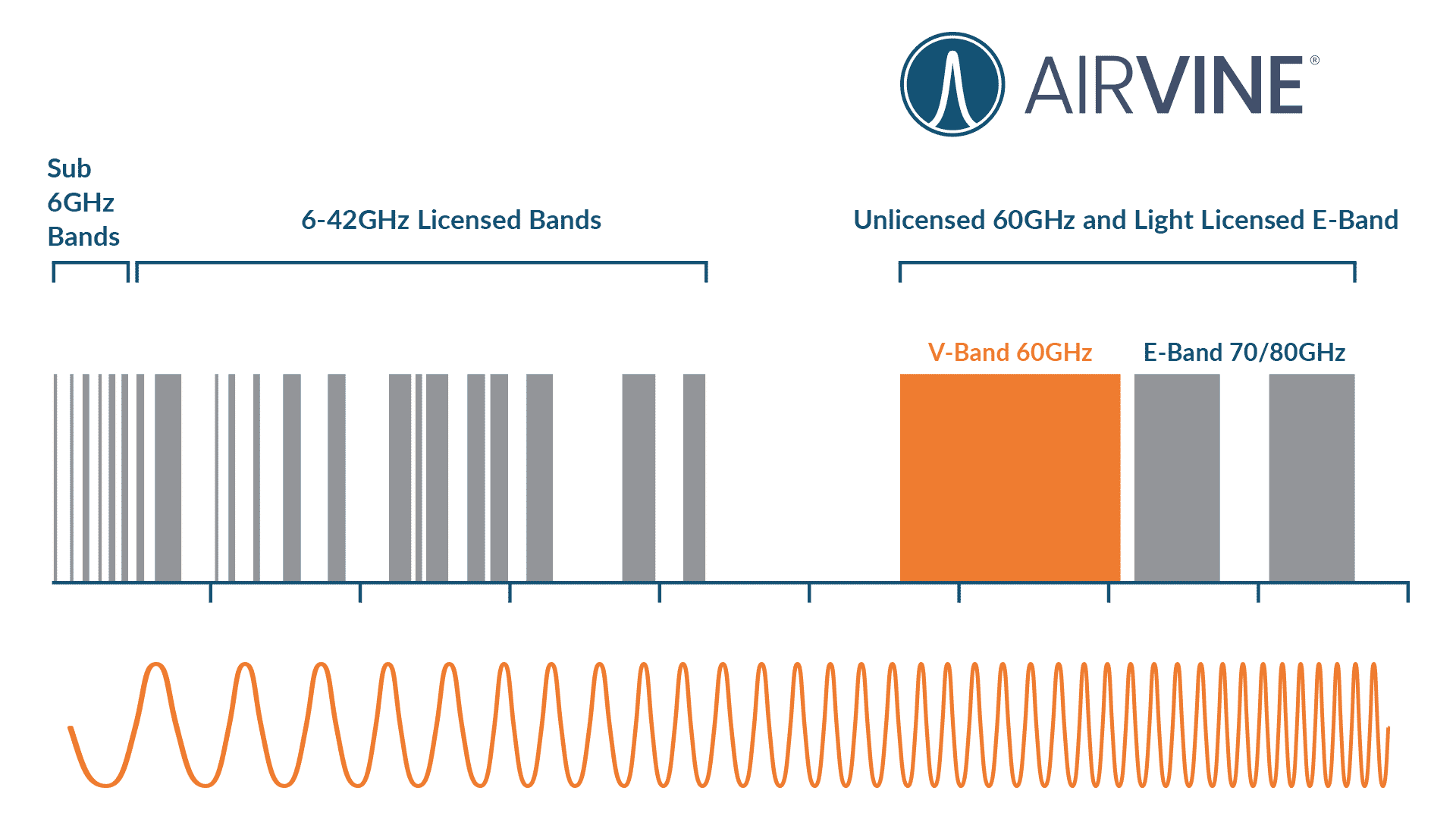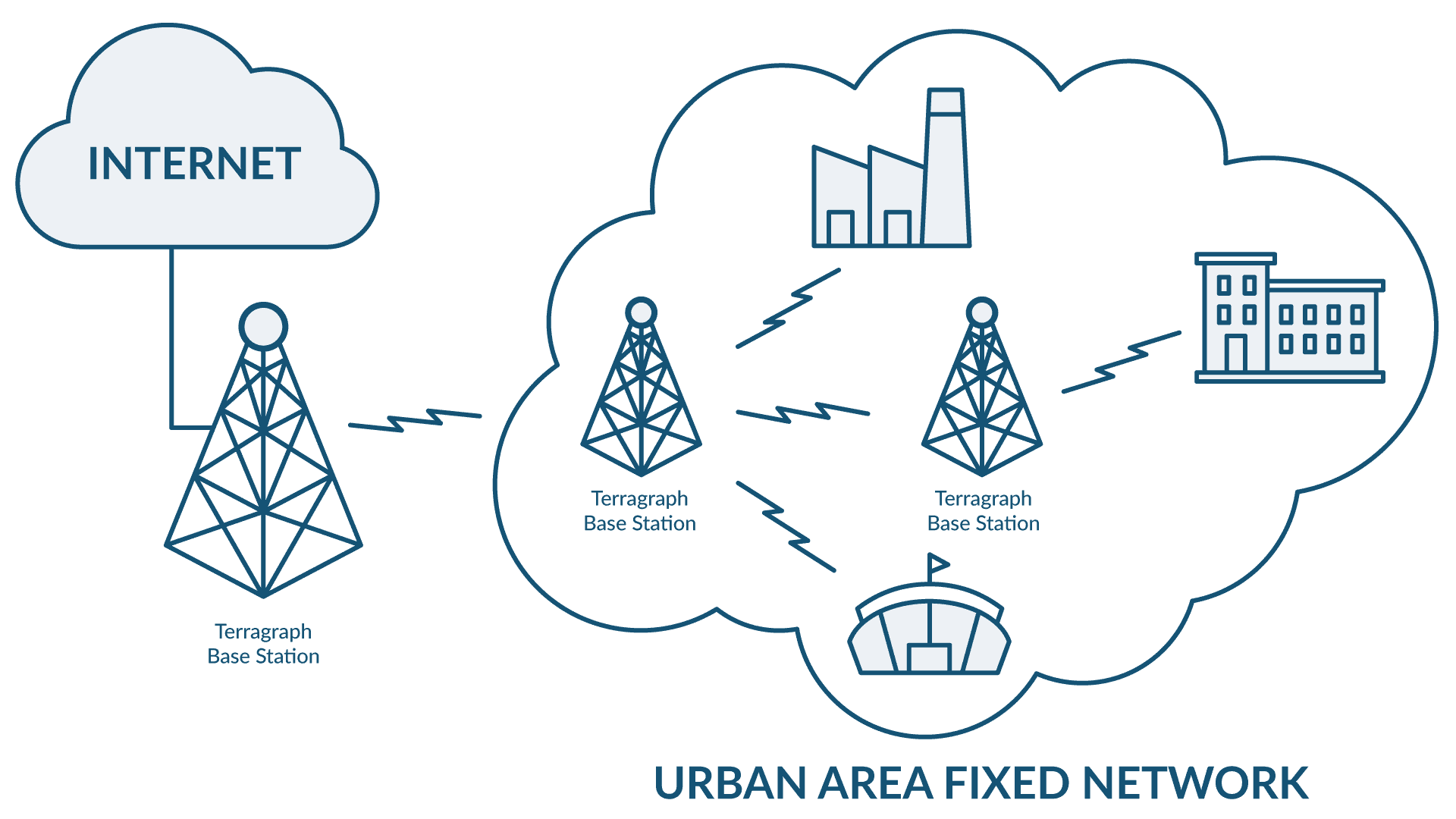Communications networks are constantly evolving, improving performance as new technologies arise all to deliver more bits/second. Wireless communications networks are no different, and if not more difficult, as the medium, air, is much harder to operate in than a cable or piece of fiber. This challenge persists across the field. The drive for more bits per second is one key factor. This is why 60GHz has been a gleam in the eye of the wireless community for years. With a whopping 14GHz of spectrum, more than all the lower bands combined.

Yet despite all the promise of multi-gigabit systems the high frequency meant equipment deployed in this band had to be Line of Site; i.e. no obstacles at all. In addition, the high frequency pushed the technology or should have, towards shorter-range applications.
60GHz Take 1 – It Begins
Over the years there have been several attempts to introduce 60GHz gear and adopt 60GHz standards with little success. The WiGig Alliance founded in 2009 introduced 60GHz to the IEEE with the 802.11ad standard in 2012. In 2014 the WiFi Alliance adopted WiGig, or 802.11ad, as an industry standard certifying WLAN equipment and performing interoperability testing.
These efforts failed. The requirement for strict LOS operation in an indoor environment was too restrictive in the home or business environment. Simply walking in between a client and an 11ad AP broke the connection. In addition, APs with WiGig built in were much more expensive. On the order of hundreds of dollars more than a standard 2.4/5GHz AP.

60GHz take 2 – We try Again
The next time 60GHz appeared on the market was just a few years later with the introduction of IEEE 802.11ay in 2019. IEEE 802.11ay was a significant improvement over 11ad in efficiency, range, and more. However, the standards team felt that this high-frequency band suited for short-range applications should be used outdoors at ranges of up to a mile. This decision was largely driven by the need to operate in strict LOS (Line of Sight). The thinking went if we must be LOS, then that is easier to do this outdoors where we can mount devices high up on buildings, towers, or even streetlights. Right off the bat, you are introducing tension between the nature of what the spectrum can readily support, short distances, and the LOS requirement.
This is even before we introduce oxygen absorption. The fact that O2 molecules resonate at 60GHz causes them to absorb the radio waves, further attenuating them and restricting the supported range.
Terragraph
This new standard was the foundation for the Terragraph system spec introduced by Facebook (now Meta) as an outdoor 60GHz industry organization. Qualcomm introduced a complete 60GHz reference design including modem, front end, and antenna to reduce total cost and speed time to market for vendors.
These systems were point-to-multipoint, meaning the AP or Base Station had to implement beam steering. This was necessary to overcome the loss in antenna gain when using 90-degree sectors as opposed to a very narrow high-gain antenna used in point-to-point communications.

And this too failed to meet market adoption expectations.
Again, 60GHz is by its very nature a short-range frequency with the added obstacle of oxygen absorption when trying to push it to longer, outdoor ranges. Broadband Wireless Access systems rely on range as a way to cover more clients per Base Station to improve the economics. Hence the need to push these systems to the limits of their capabilities.
While some will argue that Terragraph still exists and is being sold and deployed by numerous vendors and service providers, the volumes are low. Terragraph never fulfilled the vision of Meta and others in the ecosystem and as of 2022 Meta backed away from Terragraph.
Home for 60GHz – indoor, wireless, point-to-point ethernet connectivity.
Using 60GHz technology indoors taps into its strength for short distances. This aligns well with indoor needs that usually range from 25 to 50 meters. These distances rarely exceed 100 meters. It serves as an ideal alternative or supplement to CATx systems, avoiding the need for long-range coverage like a 1-mile link.
But you say, “Hey we just saw this with WiGig and you reminded us that this was a bust.” True, and remember that it was the LOS requirement that sank WiGig applications.
But what if you can overcome the LOS restriction? What if you had a 60GHz system operating as a point-to-point connection that could blast through interior walls? What if this same system was also able to beam steer over 90 degrees meaning it could go around corners?

If you had such capabilities the whole calculus of 60GHz as a spectrum that can act as an indoor cable extension or even replacement is upended. With the 14GHz of spectrum, you now can offer capacities or 10, 20Gbps Full Duplex. If you can do these things you can:
- Equal the performance of CATx, but without all the labor installing cables
- Equal the performance of CATx but be deployed in a fraction of the time
- Equals the performance of CATx, but delivers the ultimate in network flexibility. Connections can be placed and moved easily.
Close
Typically, higher frequencies mean shorter ranges and devices operating above 6GHz often require LOS connections. However, Airvine is challenging this norm with its 60GHz technology, designed for short-range communications and breaking through LOS barriers with its innovative NLOS (Non-Line-of-Sight) WaveTunnel product. Curious? Come learn more at Airvine.com